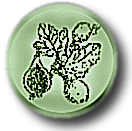Subsystem: DNA Repair Base Excision
This subsystem's description is:
This SS is under re-evaluation and should not yet been perceived as satisfactory curated.
For more information, please check out the description and the additional notes tabs, below
| Literature References | DNA glycosylases: in DNA repair and beyond. Jacobs AL Chromosoma 2012 Feb | 22048164 | The post-incision steps of the DNA base excision repair pathway in Escherichia coli: studies with a closed circular DNA substrate containing a single U:G base pair. Sandigursky M Nucleic acids research 1998 Mar 1 | 9469838 |
|---|
| Diagram | Functional Roles | Subsystem Spreadsheet | Description | Additional Notes | |||||||||
Diagram 'd01' is not a new diagram.
This SS is under re-evaluation and should not yet been perceived as satisfactory curated. DNA bases can be damaged oxidation, deamination, or akylation. The DNA repair process of BER consists of the following 5 steps. 1)The lesion in the DNA caused by the damaged base is detected by a glycosylase that pinches the DNA. A damaged base forms an unstable bond with the base on the other strand of DNA. When the glycosylase pinches the DNA, the damaged base becomes exposed due to the unstable bond, and the glycosylase cleaves off the base leaving the deoxyribose phosphate moiety attached to the rest of the strand. Different glycosylases exist to detect different types of damage. 2)An endonuclease then breaks the single strand of DNA on the 5’ side of the base-free deoxyribose moiety. 3)The deoxy ribose moiety is then excised by an exonuclease. 4)A DNA polymerase then fills in the gap with the correct base using the undamaged strand as a template. 5)A DNA ligase rejoins the phosphodiester backbone of the repaired strand. In some organism these five steps are performed by five separate proteins. In other organisms, some proteins are capable of performing multiple roles. This subsystem represents an on-going exploration of the types of damage each organism can detect, which organisms possess multi-functional roles, as well as the possibility of alternate roles for different conditions and/or redundancy. It is very likely that many of these genomes possess proteins not contained in this subsystem that are capable of detecting other types of damage, or performing the next four steps of this subsystem. It should be also noted that in the literature the terms exonuclease and endonuclease are often used in place of one another. This curator believes exonuclease should only refer to activity that breaks the external or exposed bond between the 3'-carbon of the sugar and the 5'-phosphate, and endonuclease should only refer to activity that breaks the internal bond between the 5'-carbon of the sugar and 3'-phosphate on the other side of the apurinic/apyrimidinic site. Variant Codes: Genomes with a variant code of 1,2,3,4 all have the ability to detect at least one type of damage to a base. Genomes with a variant code of 1 indicate that each role is performed by a separate enzyme. Genomes with a variant code of 2 indicate having an endonuclease that is capable of also performing the role of the glycosylase and the exonuclease. Genomes with a variant code of 3 (archaeal)indicate this curator's speculation that perhaps the endonucleases in column 'end3' might also be capable of performing the role of an exonuclease and the polymerase based on the possible activities of the domains present as indicated by Psi-blast, 3'-5' phosphodiesterase and RNase H(reverse transcriptase) activity respectively. These proteins are also virtually the same length as eukaryotic polymerase B. Genomes with a variant code of 4 indicate this curator's speculation that perhaps the some of the polymerases in column "pol1" are capable of also performing as an exonuclease due to the catalytic domains present as indicated by Psi-blast. The proteins in column "pol1" of genomes with variant codes other than 4 should also be looked at for performing the exonuclease step as well. Further investigation of variant codes 3 and 4 are necessary. Variant code 9 is for Genomes where it is suspected that a functioning version of this subsystem exists but further investigation is required to identify the genes repsonsible for one or more roles. The number of additional nucleotides, adjacent to the damaged nucleotide, that may also be removed as part of the repair process depends on which enzyme performs the role, and should also be the subject of further study according to the following paper: "The post-incision steps of the DNA base excision repair pathway in Escherichia coli: studies with a closed circular DNA substrate containing a single U:G base pair" Margarita Sandigursky, Greg A. Freyer1, William A. Franklin* Departments of Radiology and Radiation Oncology, Albert Einstein College of Medicine, 1300 Morris Park Avenue, Bronx, NY 10461, USA and 1Division of Environmental Health Science, Columbia University School of Public Health, 701 West 168th Street, New York, NY 10032, USA Received October 27, 1997; Revised and Accepted January 8, 1998 | |||||||||||||




